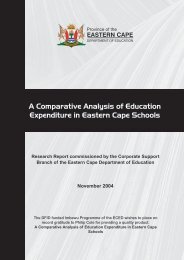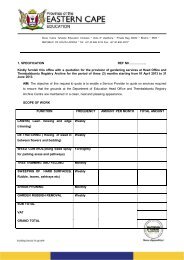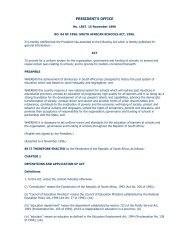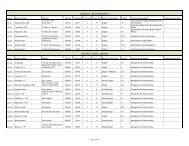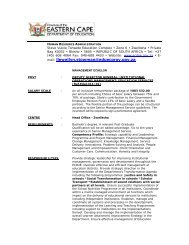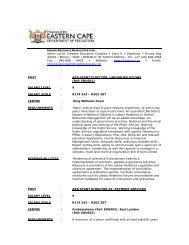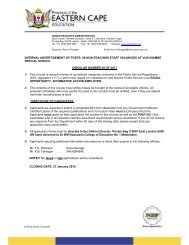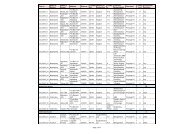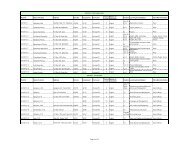part a: strategic overview - Department of Education
part a: strategic overview - Department of Education
part a: strategic overview - Department of Education
Create successful ePaper yourself
Turn your PDF publications into a flip-book with our unique Google optimized e-Paper software.
the relative share <strong>of</strong> the South African population accounted for by the Eastern Cape in 1996,<br />
which was 15.5%. Migration impacts on the development <strong>of</strong> curriculum and the increased<br />
demand for services and the delivery there<strong>of</strong>. A system is required to manage rapid<br />
urbanisation.<br />
Table 26 shows the relative provincial populations according to the 1996 and 2001 Censuses.<br />
The province that has most increased its share <strong>of</strong> the total South African population is<br />
Gauteng, which went from 18.1% in 1996 to 19.7% in 2001. The decline in the Eastern<br />
Cape’s share is the most significant <strong>of</strong> all provinces. There are several possible reasons for<br />
this including outward migration in search in better economic opportunities, decreased fertility<br />
(although there is no apparent reason why the Eastern Cape specifically should have<br />
declining fertility) and perhaps a different methodology in the 2001 Census that led to reduced<br />
counts. Overall, the population <strong>of</strong> the Eastern Cape grew by just 134 000 from 1996 to 2001,<br />
an increase <strong>of</strong> 2.1%.<br />
Table 9: Total Population by Province, 1996 and 2001 Census<br />
Province Population 1996<br />
% share <strong>of</strong><br />
National<br />
Population<br />
1996<br />
Population 2001<br />
% share <strong>of</strong><br />
National<br />
Population<br />
2001<br />
Change in<br />
National<br />
share 1996 -<br />
2000<br />
Eastern Cape 6 302 524 15.5% 6 436 764 14.4% -1.2%<br />
Free State 2 633 503 6.5% 2 706 774 6.0% -0.4%<br />
Gauteng 7 348 425 18.1% 8 837 174 19.7% 1.6%<br />
KwaZulu-Natal 8 417 020 20.7% 9 426 015 21.0% 0.3%<br />
Limpopo 4 929 365 12.1% 5 273 639 11.8% -0.4%<br />
Mpumalanga 2 800 710 6.9% 3 122 991 7.0% 0.1%<br />
Northern Cape 840 323 2.1% 822 729 1.8% -0.2%<br />
North West 3 354 824 8.3% 3 669 353 8.2% -0.1%<br />
Western Cape 3 956 876 9.7% 4 524 341 10.1% 0.3%<br />
Total 40 583 570 100% 44 819 780 100%<br />
Since a national population census was conducted by Statistics South Africa in both 1996 and<br />
2001, this allows for several interesting comparisons to be made over the six-year period.<br />
Graph 1 compares provinces in terms <strong>of</strong> their population growth over this period, showing<br />
which provinces experienced the greatest increase. The fact that the Eastern Cape has<br />
experienced a relatively low rate <strong>of</strong> increase has implications for the provision <strong>of</strong> education in<br />
the province – it implies that, unlike Gauteng, the demand for education has remained relatively<br />
stable during this period and that there is unlikely to be a need to build new schools to meet<br />
new demographic demand. This does not detract from an ongoing need to address existing<br />
backlogs and, in some cases, to build new schools to improve access to education.<br />
A challenge for the education system is to improve access to schooling, more especially to<br />
secondary and further education and training facilities for the high number <strong>of</strong> non-urban.<br />
5 Year ECDoE Strategic Plan for for 2005/06 2005-06 to to 2009/10. 2009-10. March 21 F (3) 2006 Page 58<br />
54<br />
<strong>part</strong> C: background information




